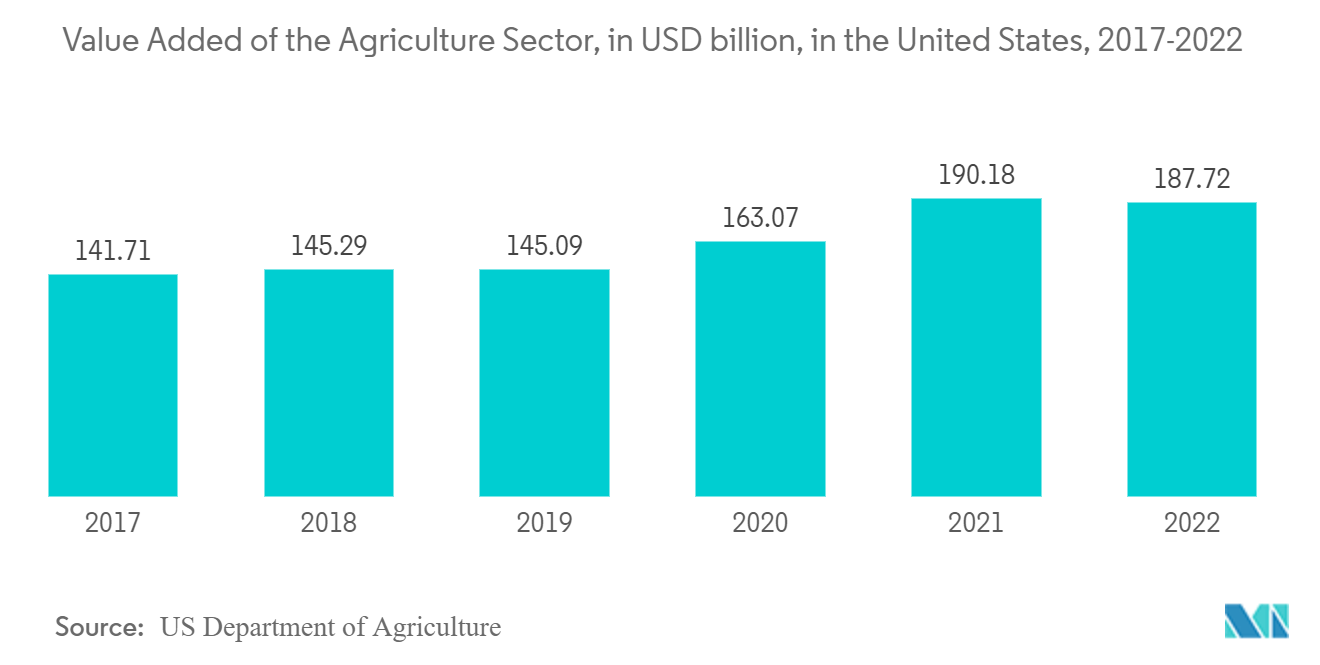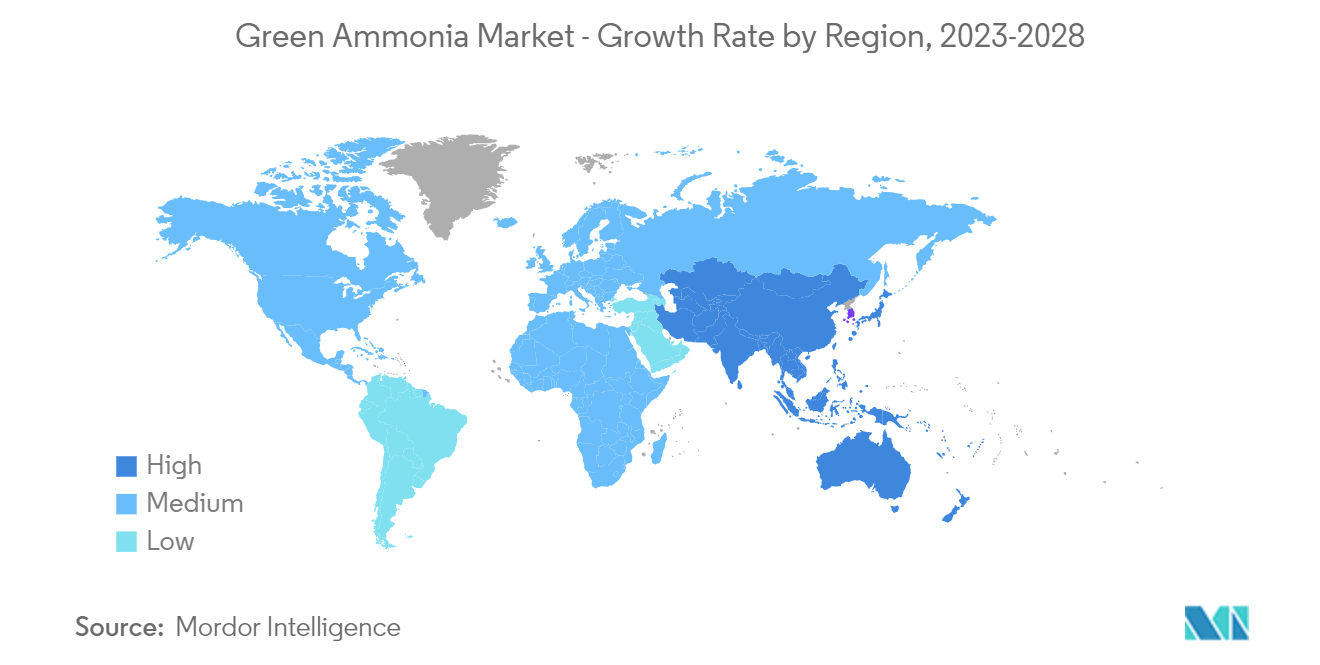Market Trends of Green Ammonia Industry
Growing Agricultural Production
- Ammonia is important in agriculture as it binds airborne nitrogen and makes nitrogen the most important crop nutrient available for nitrogen fertilizer production.
- The demand for green ammonia is increasing with the growing population and rising need for green fertilizers. Green ammonia is intended to produce carbon-neutral fertilizer products, decarbonizing the food value chain.
- Green ammonia is essential for sustainable food production. Several manufacturers are focusing on producing carbon-free fertilizers. For instance, Yara International is working towards making carbon-free fertilizer, and clean hydrogen is the major enabler for making CO2-free or green ammonia, which is the key ingredient for green fertilizer.
- The growing population is estimated to increase food production by as much as 68 percent by 2050.
- The European fertilizer industry made tremendous improvements in the energy efficiency of ammonia production. The value of agricultural output rose sharply in nominal terms (+8.3 %) in 2021. More than 55.3% of the value of the total output of the EU's agricultural industry came from crops that were EUR 248.7 billion (USD 290 billion) in 2021, within which cereals and vegetables, and horticultural plants were the most valuable crops.
- China is the world's largest consumer of feed grains and supports this robust level through domestic and imported supplies. China's agricultural sector maintained a development momentum in the first three quarters of 2022, with the value-added output of the primary industry increasing by 4.2% year-on-year to Yuan 5.48 trillion (USD 755 billion). In 2021, China's agricultural production value amounted to around Yuan 7.83 trillion (USD 1.2 trillion).
- Therefore, the factors above are projected to boost the consumption of green ammonia in the agriculture sector.

North America Expected to Dominate the Market
- North America is the largest consumer of green ammonia, driven mainly by agriculture, power generation, and transportation.
- The rising population in the United States increased the need for food, which, in turn, propelled the agriculture sector. It further upsurged the consumption of green ammonia within the region.
- The agriculture sector is one of the major sectors in the United States. The increasing global demand for corn, cereals, and other corn products is fueling the growth of the agriculture industry in the United States. In 2021, the total number of farms stood at over 2 million.
- On average, farm sizes are around 445 acres, and there are about 895 million acres of farmland across the country. In 2021, the net value added to the agricultural sector amounted to approximately USD 190 billion.
- Canada led other selected nations in terms of average total farm area, with farms in Canada reporting 809.4 acres per farm in 2021. Canada exported nearly USD 82.2 billion in agriculture and food products (including raw agricultural materials, fish and seafood, and processed foods) in 2021.
- Furthermore, the supply of green ammonia to energy companies will drive the regional market. For instance, in 2022, German energy firms Uniper and E.ON plan to work on deals with Canada's EverWind to buy 1 million tonnes of green ammonia a year from the middle of the decade.
- Therefore, the factors above are projected to boost the consumption of green ammonia in the agriculture and power generation industries.


